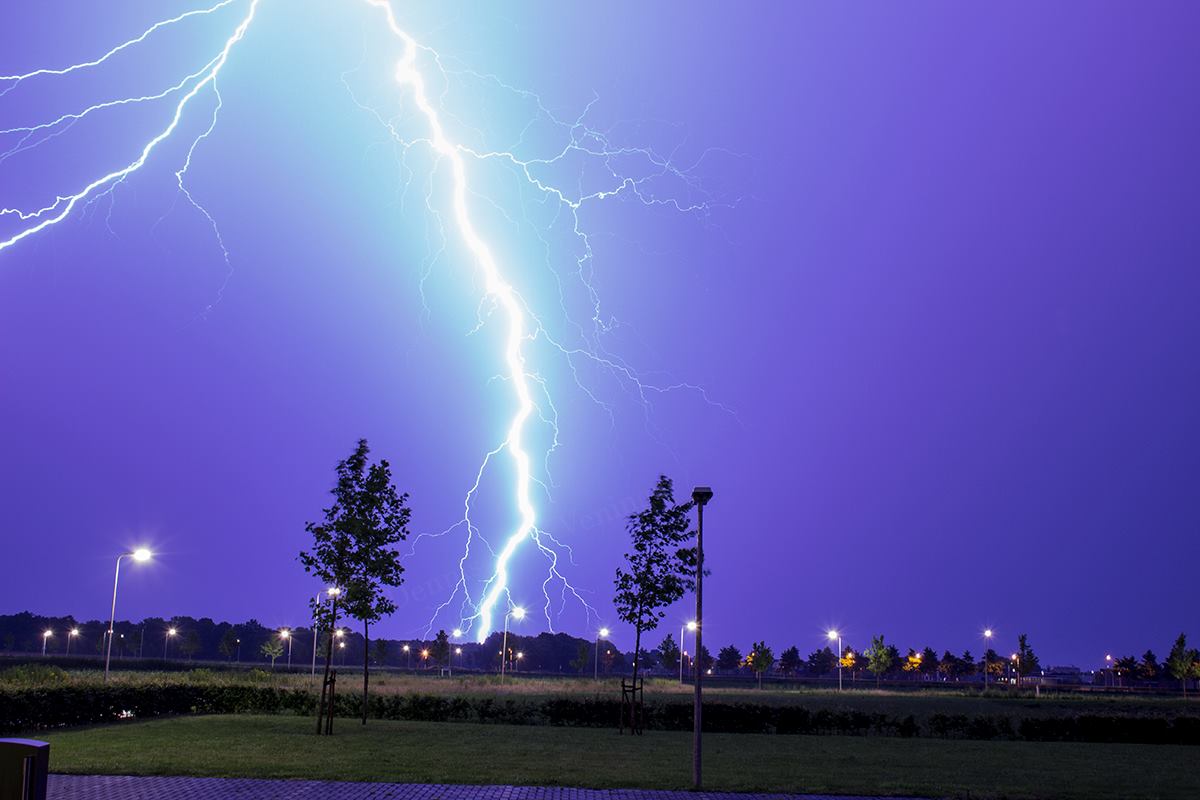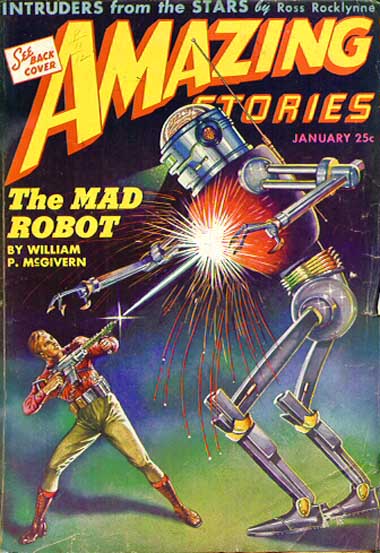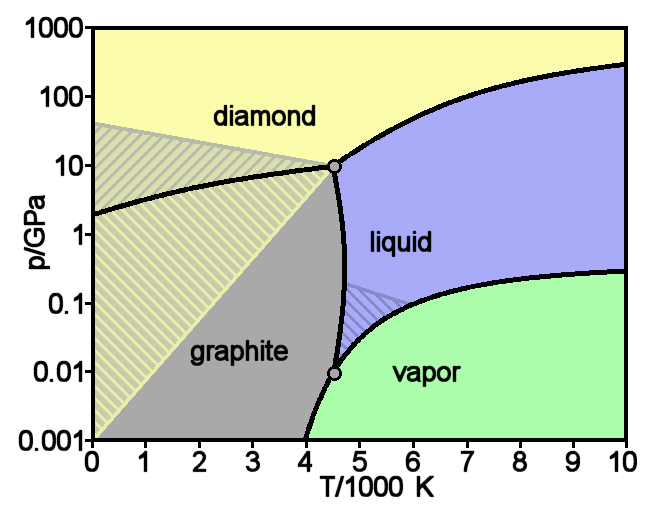|
Plasma Torch
A plasma torch (also known as a plasma arc, plasma gun, plasma cutter, or plasmatron) is a device for generating a directed flow of plasma. The plasma jet can be used for applications including plasma cutting, plasma arc welding, plasma spraying, and plasma gasification for waste disposal. Types Thermal plasmas are generated in plasma torches by direct current (DC), alternating current (AC), radio-frequency (RF) and other discharges. DC torches are the most commonly used and researched, because when compared to AC: "there is less flicker generation and noise, a more stable operation, better control, a minimum of two electrodes, lower electrode consumption, slightly lower refractory eatwear and lower power consumption". Transferred vs. non-transferred There are two types of DC torches: non-transferred and transferred. In non-transferred DC torches, the electrodes are inside the body/housing of the torch itself (creating the arc there). Whereas in a transferred torch one e ... [...More Info...] [...Related Items...] OR: [Wikipedia] [Google] [Baidu] |
Plasma Cutter
Plasma cutting is a process that cuts through electrical conductor, electrically conductive materials by means of an accelerated jet of hot plasma (physics), plasma. Typical materials cut with a plasma torch include steel, stainless steel, aluminum, brass and copper, although other conductive metals may be cut as well. Plasma cutting is often used in metal fabrication, fabrication shops, automotive repair and Conservation and restoration of road vehicles, restoration, industrial construction, and marine salvage, salvage and scrapping operations. Due to the high speed and precision cuts combined with low cost, plasma cutting sees widespread use from large-scale industrial Computer Numerical Control, computer numerical control (CNC) applications down to small hobbyist shops. The basic plasma cutting process involves creating an electrical channel of superheated, electrically ionized gas i.e. plasma from the plasma cutter itself, through the workpiece to be cut, thus forming a comple ... [...More Info...] [...Related Items...] OR: [Wikipedia] [Google] [Baidu] |
Plasma Source
Plasma () is a state of matter characterized by the presence of a significant portion of charged particles in any combination of ions or electrons. It is the most abundant form of ordinary matter in the universe, mostly in stars (including the Sun), but also dominating the rarefied intracluster medium and intergalactic medium. Plasma can be artificially generated, for example, by heating a neutral gas or subjecting it to a strong electromagnetic field. The presence of charged particles makes plasma electrically conductive, with the dynamics of individual particles and macroscopic plasma motion governed by collective electromagnetic fields and very sensitive to externally applied fields. The response of plasma to electromagnetic fields is used in many modern devices and technologies, such as plasma televisions or plasma etching. Depending on temperature and density, a certain number of neutral particles may also be present, in which case plasma is called partially ionized. Neo ... [...More Info...] [...Related Items...] OR: [Wikipedia] [Google] [Baidu] |
Inductively Coupled Plasma Mass Spectrometry
Inductively coupled plasma mass spectrometry (ICP-MS) is a type of mass spectrometry that uses an inductively coupled plasma to ionize the sample. It atomizes the sample and creates atomic and small polyatomic ions, which are then detected. It is known and used for its ability to detect metals and several non-metals in liquid samples at very low concentrations. It can detect different isotopes of the same element, which makes it a versatile tool in isotopic labeling. Compared to atomic absorption spectroscopy, ICP-MS has greater speed, precision, and sensitivity. However, compared with other types of mass spectrometry, such as thermal ionization mass spectrometry (TIMS) and glow discharge mass spectrometry (GD-MS), ICP-MS introduces many interfering species: argon from the plasma, component gases of air that leak through the cone orifices, and contamination from glassware and the cones. Components Inductively coupled plasma An inductively coupled plasma is a plasma that is ... [...More Info...] [...Related Items...] OR: [Wikipedia] [Google] [Baidu] |
ESAB
ESAB, ''Elektriska Svetsnings-Aktiebolaget'' (), is an American-Swedish industrial company. The ultimate parent company of ESAB is ESAB Corporation, a New York Stock Exchange listed (TickerESAB with its principal executive office in North Bethesda, Maryland, U.S. ESAB products includes a fabrication technology arm, which includes welding, cutting, gas control, PPE, software, and robotic equipment and a separate gas control portfolio focused on healthcare, industrial, and specialty gas control solutions. History The company was founded in 1904 by Swedish businessman Oscar Kjellberg in Gothenburg, Sweden. The company sells equipment for welding and cutting. Other notable CEO was Lars Westerberg who ran ESAB for three years. The ESAB was acquired by Charter International in 1994. The ESAB group was acquired by Colfax Corporation on 13 January 2012. Following the purchase, the CEO of Colfax, Clay Kiefaber, stepped down to the president role of ESAB and was replaced by Steve ... [...More Info...] [...Related Items...] OR: [Wikipedia] [Google] [Baidu] |
STEP-NC
STEP-NC is a machine tool control language that extends the ISO 10303 STEP standards with the machining model in ISO 14649, adding geometric dimension and tolerance data for inspection, and the STEP PDM model for integration into the wider enterprise. The combined result has been standardized as ISO 10303-238 (also known as AP238). STEP-NC was designed to replace ISO 6983/RS274D G-codes with a modern, associative communications protocol that connects computer numerical controlled (CNC) process data to a product description of the part being machined. A STEP-NC program can use the full range of geometric constructs from the STEP standard to communicate device-independent toolpaths to the CNC. It can provide CAM operational descriptions and STEP CAD geometry to the CNC so workpieces, stock, fixtures and cutting tool shapes can be visualized and analyzed in the context of the toolpaths. STEP GD&T information can also be added to enable quality measurement on the control, and C ... [...More Info...] [...Related Items...] OR: [Wikipedia] [Google] [Baidu] |
Plasma Weapon (fiction)
Strange and exotic weapons are a recurring feature in science fiction. In some cases, weapons first introduced in science fiction have been made a reality; other science-fiction weapons remain purely fictional, and are often beyond the realms of known physical possibility. At its most prosaic, science fiction features an endless variety of sidearms—mostly variations on real weapons such as guns and swords. Among the best-known of these are the phaser—used in the ''Star Trek'' television series, films, and novels—and the lightsaber and blaster—featured in ''Star Wars'' movies, comics, novels, and TV shows. Besides adding action and entertainment value, weaponry in science fiction sometimes touches on deeper concerns and becomes a theme, often motivated by contemporary issues. One example is science fiction that deals with weapons of mass destruction. In early science fiction Weapons of early science-fiction novels were usually bigger and better versions of conventiona ... [...More Info...] [...Related Items...] OR: [Wikipedia] [Google] [Baidu] |
Graphite
Graphite () is a Crystallinity, crystalline allotrope (form) of the element carbon. It consists of many stacked Layered materials, layers of graphene, typically in excess of hundreds of layers. Graphite occurs naturally and is the most stable form of carbon under standard conditions. Synthetic and natural graphite are consumed on a large scale (1.3million metric tons per year in 2022) for uses in many critical industries including refractories (50%), lithium-ion batteries (18%), foundries (10%), and lubricants (5%), among others (17%). Graphite converts to diamond under extremely high pressure and temperature. Graphite's low cost, thermal and chemical inertness and characteristic conductivity of heat and electricity finds numerous applications in high energy and high temperature processes. Types and varieties Graphite can occur naturally or be produced synthetically. Natural graphite is obtained from naturally occurring geologic deposits and synthetic graphite is produced t ... [...More Info...] [...Related Items...] OR: [Wikipedia] [Google] [Baidu] |
Tungsten
Tungsten (also called wolfram) is a chemical element; it has symbol W and atomic number 74. It is a metal found naturally on Earth almost exclusively in compounds with other elements. It was identified as a distinct element in 1781 and first isolated as a metal in 1783. Its important ores include scheelite and wolframite, the latter lending the element its alternative name. The free element is remarkable for its robustness, especially the fact that it has the highest melting point of all known elements, melting at . It also has the highest boiling point, at . Its density is 19.254 g/cm3, comparable with that of uranium and gold, and much higher (about 1.7 times) than that of lead. Polycrystalline tungsten is an intrinsically brittle and hard material (under standard conditions, when uncombined), making it difficult to work into metal. However, pure single-crystalline tungsten is more ductile and can be cut with a hard-steel hacksaw. Tungsten occurs in many alloys ... [...More Info...] [...Related Items...] OR: [Wikipedia] [Google] [Baidu] |
Electrodes
An electrode is an electrical conductor used to make contact with a nonmetallic part of a circuit (e.g. a semiconductor, an electrolyte, a vacuum or a gas). In electrochemical cells, electrodes are essential parts that can consist of a variety of materials (chemicals) depending on the type of cell. An electrode may be called either a cathode or anode according to the direction of the electric current, unrelated to the potential difference between electrodes. Michael Faraday coined the term "" in 1833; the word recalls the Greek ἤλεκτρον (, "amber") and ὁδός (, "path, way"). The electrophore, invented by Johan Wilcke in 1762, was an early version of an electrode used to study static electricity. Anode and cathode in electrochemical cells Electrodes are an essential part of any battery. The first electrochemical battery was devised by Alessandro Volta and was aptly named the Voltaic cell. This battery consisted of a stack of copper and zinc electrodes sep ... [...More Info...] [...Related Items...] OR: [Wikipedia] [Google] [Baidu] |
Insulator (electricity)
An electrical insulator is a material in which electric current does not flow freely. The atoms of the insulator have tightly bound electrons which cannot readily move. Other materials—semiconductors and electrical conductor, conductors—conduct electric current more easily. The property that distinguishes an insulator is its resistivity; insulators have higher resistivity than semiconductors or conductors. The most common examples are Nonmetal (chemistry), non-metals. A perfect insulator does not exist because even the materials used as insulators contain small numbers of mobile charges (charge carriers) which can carry current. In addition, all insulators become electrically conductive when a sufficiently large voltage is applied that the electric field tears electrons away from the atoms. This is known as electrical breakdown, and the voltage at which it occurs is called the breakdown voltage of an insulator. Some materials such as glass, Electrical insulation paper, paper ... [...More Info...] [...Related Items...] OR: [Wikipedia] [Google] [Baidu] |









